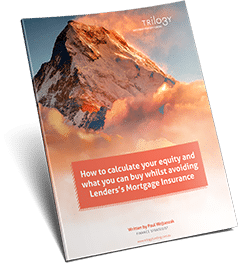Thanks for visiting the Trilogy Learning Zone. You can collect your downloads below!
-
Getting Past One Investment Property: Funding Strategies For Growth-Oriented Investors
Discover the five most common reasons most Australians don’t get past their first investment property… and effective ways to overcome them.
-
The Advanced Property Investor’s Guide To Managing Debt For Success
Discover how to overcome bank lending thresholds, access new streams of finance, and rapidly grow your portfolio (…especially if you have more than $1.5 million in loans).
-
How To Structure Your Loans To Avoid Cross Collateralisation
This resource explains how to structure your new or existing loans so you retain maximum control over your assets.
-
How To Calculate Your Equity
This resource explains how to establish the amount you can afford to borrow, before the added expense of Lender’s Mortgage Insurance kicks in.
-
What Is A Buyer’s Agent?
This resource explains the role of the buyers agent, from searching for and evaluating property to negotiating the transaction for clients and bidding at auction.
 Free Property Investor Resources
Free Property Investor Resources



